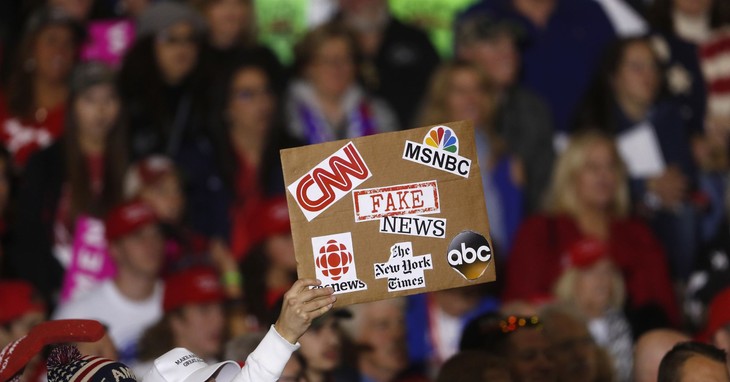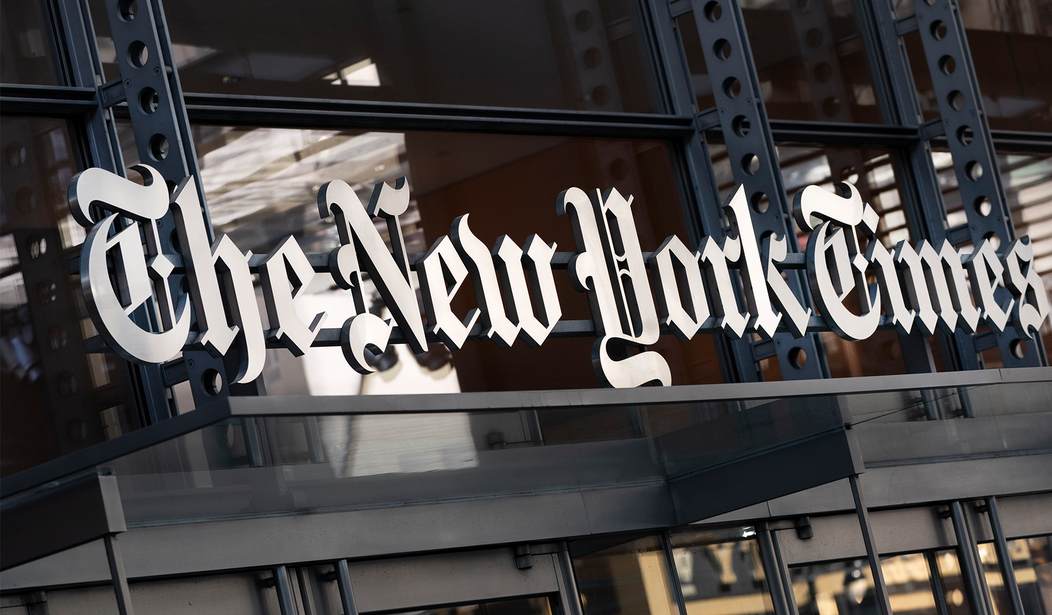Starting Monday, the New York Times will have a new beat that focuses on “right-wing media”. Last week, Times Politics editor David Halbfinger welcomed Ken Bensinger to “pioneer” the beat as part of their “democracy team”. Bensinger previously worked as an investigative reporter at BuzzFeed News. His prior relevant work includes a focus on campaign finance research, political disinformation, and profiling January 6 defendants.
Oh, and he was the reporter who released the now-debunked Steele Dossier onto the public under the headline, “These Reports Allege Trump Has Deep Ties To Russia.” Political disinformation, you say?
Former President Donald Trump, who popularized the phrase “Fake News” and endured years of allegations based on the politically funded Steele Dossier, reacts to the launch by telling Breitbart News,
“This is just another example of the New York Times making clear that they have zero interest in covering conservatives fairly. Unfortunately, the former ‘paper of record,’ is more interested in hiring radical left-wing activists who act like rapid response staffers for the Democratic National Committee, than actual unbiased journalists,”
Halbfinger described the right-wing media beat,
“…filled as it is with people who reject mainstream narratives and question the institutions that hold up our democracy. Understanding the way information is developed, circulated and absorbed on the right is vital at this precarious moment,”

Unpacking the Rhetoric
Let’s explore those sentences a bit.
- “…filled as it is with people who reject mainstream narratives” are words fueled by the author’s resentment of people. They are upset with you, and me, because we don’t settle for the approved daily talking points, authoritative information, or lectures from the moral hierarchy of selective virtue. The author is describing types of people he finds reprehensible while describing alternative media.
- “… and question the institutions that hold up our democracy” is commentary that criticizes the act of questioning and paints presumably the mainstream media (MSM) as gatekeepers of democracy, however self-aggrandizing. Here, questioning an institution is an anti-democratic, abject rebellion against a form of government. Bonafide definitions of democracy include having the supreme power vested in the people, not institutions. Democracy provides for deliberation and even… questioning.
- “Understanding the way information is developed, circulated and absorbed on the right is vital at this precarious moment,” tells us that this isn’t just a project assigned to rebut and poke fun at alternative media but it’s a research project about every aspect of how we communicate. The fact that I write words and then you read them is some kind of symbiosis that the Times is gonna get to the bottom of, posthaste.
It’s easy to conclude that they are launching the thought police. So far, the allegations against alternative media and viewers are that we have rejected their narratives and the act of questioning institutions is a threat to a system where people vote on things. And, Russia, Russia, Russia, of course.
Welp, that was a hellova introductory sentence for the neighborhood watch of media columns.
It’s the MSM’s Fault America Doesn’t Trust Them
While Halbfinger’s introductory words ring overly critical of Americans freely choosing their information sources and news, they also hold misplaced blame and contempt for exchange of thought. An objective to not only rebut right-wing perspectives but study and track them demonstrates the MSM has no reflections on their part in the equation.
In July, America’s confidence in both newspapers and televised news programming hit record lows according to a Gallup poll. Just 16% of Americans said they have a “great deal or quite a lot of confidence” in newspapers and only 11% have that level of confidence in television news. I regret insulting our very cerebral readers with Econ 101 but since MSM refuses to take accountability for how they spectacularly drive away viewers: Alternative media outlets provide value to audiences and fill a void in the media markets. What a concept!
While reading the Fox News report on the new beat, I initially thought the Times was going to specifically include right-wing viewpoints and reporting. As in, they had a moment of clarity realizing their shortcomings and will now offer the parts of the conversation where their coverage left gaps to be filled. I thought, momentarily, that they were going to do something different. But, I was wrong and they are doing what they already do; while being kicked into overdrive at a “precarious moment,” which means ahead of an election cycle, if you ask me.

To best demonstrate “what they already do”, see these New York Times headlines on alternative media:
-
On Conservative Radio, Misleading Message Is Clear: ‘Democrats Cheat’
- Trump Isn’t the Only One on Trial. The Conservative Media Is, Too
- ‘Nothing to Do With Climate Change’: Conservative Media and Trump Align on Fires
I am fully aware that alternative media outlets comment on MSM’s angles and presentations daily. This works to provide a necessary alternative to pre-formulated allowable spectrums of opinion in civics. It works because people don’t want to be forced into an opinion by social pressure. It works because people don’t want to be manipulated by the loudest voice in the room, or six floating heads on an opinion panel. It works because we are not the MSM. I don’t think that formula works well in reverse.
Doing more of the same, aggressively, will not solve the MSM’s credibility problem. I anticipate the new beat to be another tool to silence and censor… and will fail because not allowing free thought ends up making them authoritative bullies. Trump was always right about the “Fake News Media,” and the American people agree.














